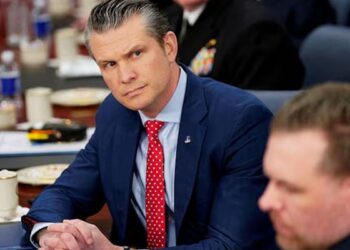PANAMA CITY: A recent agreement between the United States and Panama permits U.S. troops to utilize several military bases along the Panama Canal for training and operational purposes. This development is viewed as part of former President Donald Trump’s strategy to assert greater U.S. influence over this critical waterway.
The agreement, signed by top security officials from both nations, grants U.S. military personnel the ability to operate from Panama-controlled facilities for training, exercises, and various activities.
Notably, the deal does not allow the establishment of permanent U.S. bases on the isthmus, a decision that would likely be met with strong opposition from the Panamanian public and pose significant legal challenges.
However, this agreement gives the U.S. extensive authority to send an undetermined number of personnel to bases that were originally constructed during its occupation of the canal zone decades ago.
Since assuming office in January, Trump has expressed concerns about China’s influence over the canal, which carries about 40% of U.S. container traffic and 5% of global trade.
His administration has vowed to “take back” control of the vital waterway that the U.S. once financed, built, and managed until 1999.
Historically, the U.S. has participated in military exercises in Panama.
Nonetheless, establishing a long-term rotational military presence — akin to the U.S. arrangement in Darwin, Australia — could be politically risky for Panama’s center-right leader, José Raúl Mulino.
‘Country on Fire’
During a trip to Peru on Thursday, Mulino disclosed that the U.S. had expressed interest in establishing its own bases.
He informed Pentagon chief Pete Hegseth that U.S. bases, as proposed in an earlier draft, would be “unacceptable.”
Mulino cautioned Hegseth, stating, “Do you want to ignite chaos? What we have set in motion here would incite unrest throughout the country.”
In the revised “Memorandum of Understanding,” signed by Hegseth and Panama’s Security Chief Frank Ábrego, Panama secured several concessions.
The agreement acknowledges Panama’s sovereignty — something uncertain after Trump indicated that he would not rule out military intervention — and affirms Panama’s control over any installations.
Any deployments will require approval from Panama.
However, given Trump’s propensity to alter or discard trade agreements, treaties, and pacts, this provision may offer little solace to anxious Panamanians.
Panama’s relationship with the United States has long been complicated.
While they maintain strong cultural and economic ties, the legacy of U.S. occupation of the canal zone and the 1989 invasion to depose dictator Manuel Noriega still casts a long shadow.
This invasion claimed the lives of over 500 Panamanians and damaged parts of the capital.
Trump’s assertions about reclaiming the canal and his claims regarding Chinese influence have sparked widespread protests.
By law, Panama manages the canal with open access for all nations.
However, President Trump has focused on a Hong Kong company that has operated ports at both ends of the canal — providing a crucial link between the Atlantic and Pacific Oceans — for many years.
Under pressure from the White House, Panama has accused the Panama Ports Company of violating its contracts and has sought the company’s withdrawal from its operations.
Last month, the parent company of the ports, CK Hutchison, announced a $19 billion cash deal to divest 43 ports in 23 countries — including its two on the Panama Canal — to a consortium led by U.S. asset manager BlackRock.
This announcement has resulted in a furious backlash from Beijing, which has initiated an antitrust review of the transaction.






